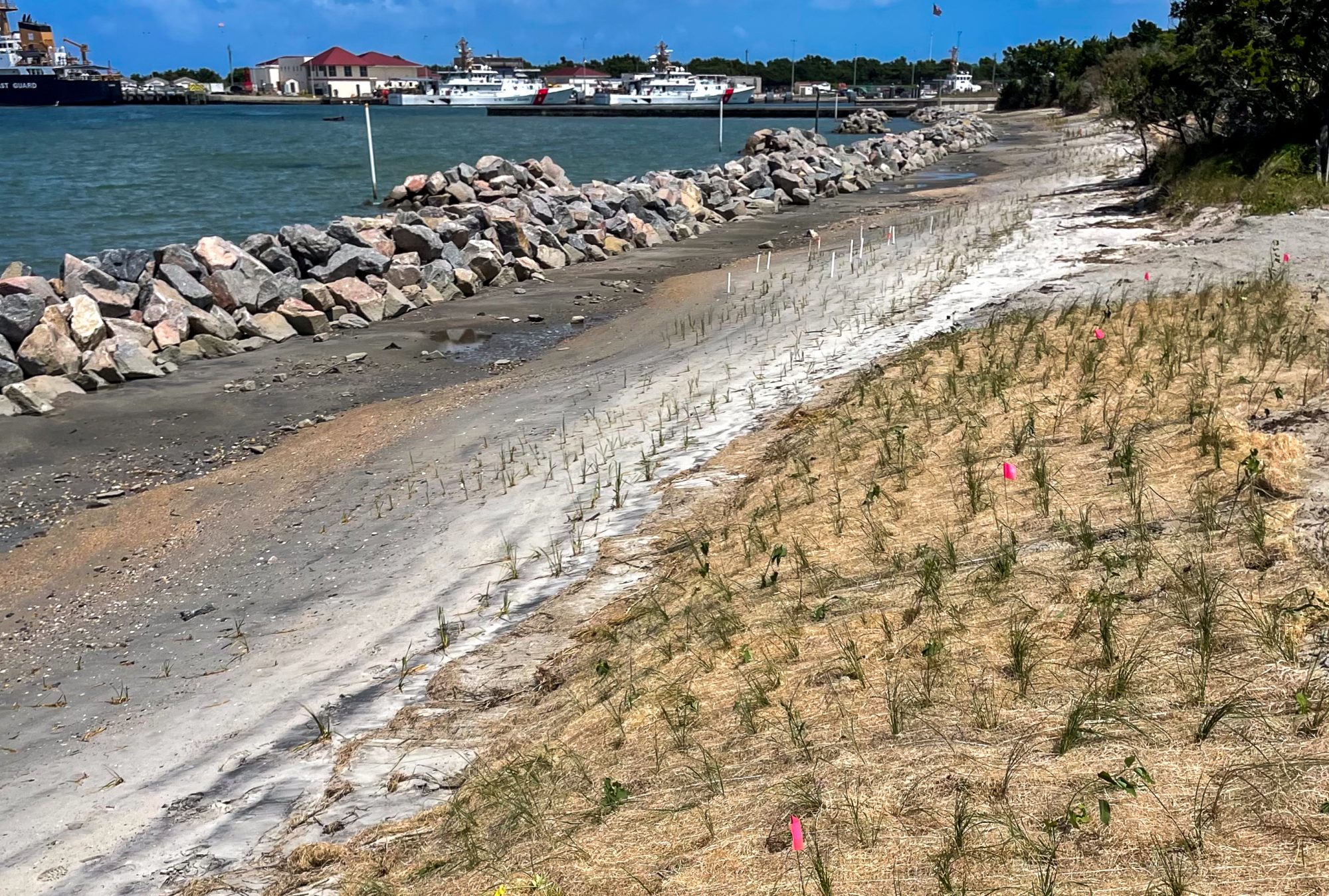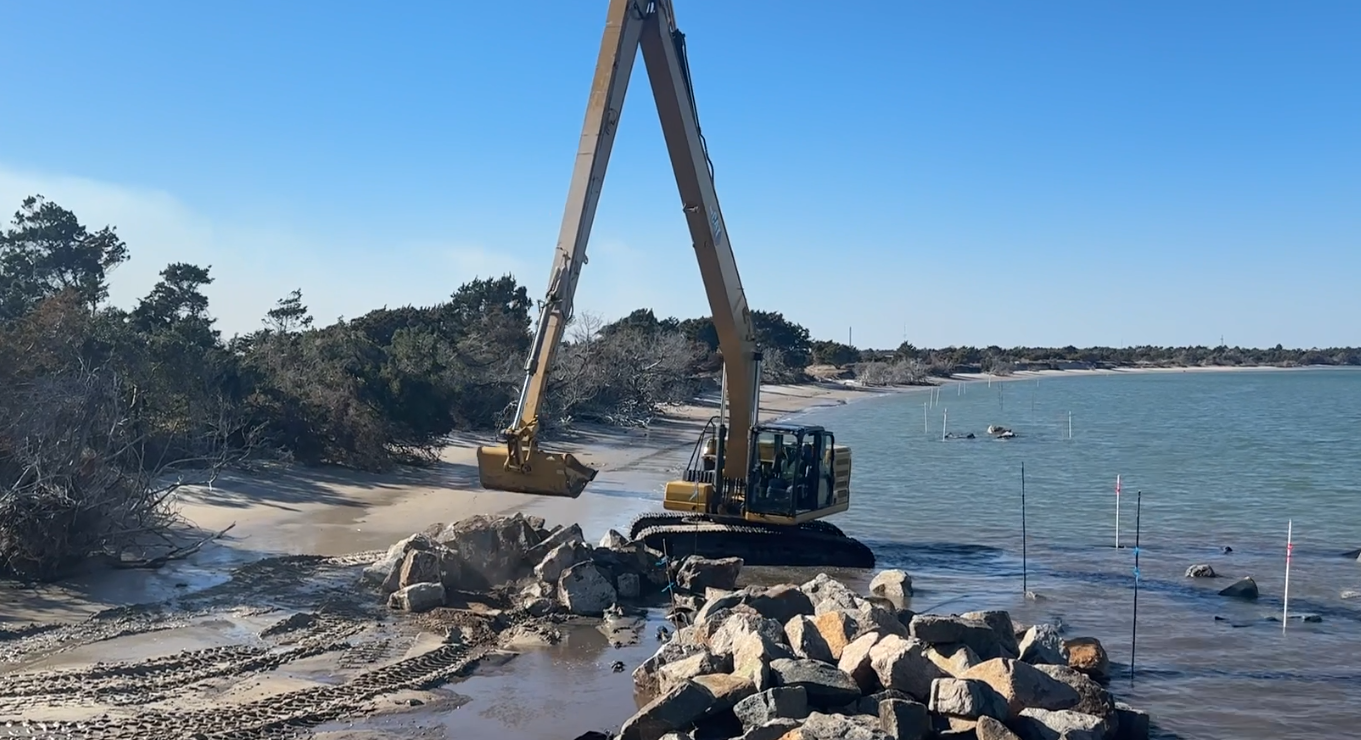
Fort Macon State Park is a 424-acre park in Atlantic Beach, NC, that features a pre-Civil War fort along with miles of hiking trails and beachfront visited by over a million people annually.
For over a decade, the northern soundside of the park has experienced drastic shoreline erosion that has reduced estuarine habitat and impacted park operations. This erosion is due to waves and significant storm surge from tropical storms and hurricanes that have increased in frequency and intensity due to climate change. Increased sea level and King Tides have also taken their toll on the shoreline in more recent years.
That section of the park is adjacent to a U.S. Coast Guard station and was once a lush salt marsh habitat. In 1934, the sandy shoreline that you see now was salt marsh that was covered by dredge spoil which has since eroded substantially. The Coastal Federation in partnership with the Park is restoring and protecting the salt marsh with a living shoreline.
The Project
The living shoreline project at Fort Macon State Park is a 2,400-foot granite rock living shoreline that will reduce erosion of the soundside area of the park. It will also protect the adjacent U.S. Coast Guard property and will rebuild some of the emergent salt marsh that was lost due to the placement of dredge spoils on top of the marsh years ago. Granite rock was chosen as the material for this living shoreline due to the intense rate of erosion the area has already seen and the high wave energy that affects the area in part because of boat traffic.
Granite sills reduce the impacts of waves and storm surge and create calm water landward of the structure, allowing for sediment accretion and shoreline stabilization. The granite sill was installed in early 2024 and was planted with marsh grasses in spring 2024. Additional plantings will be performed in spring 2025.



Protecting Fort Macon
Aside from helping to protect the historic Fort Macon, which sees more than one million visitors annually, the living shoreline will enhance the rich, regularly flooded estuarine waters that are vital to the coastal ecosystem, as they supply food for a mosaic of marine organisms and serve as nurseries for economically important species such as crabs, shrimp, and other shellfish. The project will protect and restore the habitat home to the diamondback terrapin, the only reptile to regularly inhabit estuarine waters along the coast like the park’s tidal creeks. The area is also home to seaside little bluestem grasslands. These are the host plants for the endemic crystal skipper butterfly, a species of federal concern recorded only in Carteret County.
This project will also naturally stabilize and protect the eroding shoreline and the shared land and critical infrastructure (Park and U.S. Coast Guard) it protects, which will, in turn, prevent flooding and erosion, and build fisheries habitat. The U.S. Army Corps of Engineers will also benefit because the sand will no longer erode from the park’s shoreline into the Beaufort Inlet channel. The need to constantly dredge the channel will be reduced. It will also increase navigational safety due to the reduced shoaling in the channel and inlet that was caused by the previously eroding sand.
The living shoreline was designed by Quible & Associates, P.C. and constructed by Carolina Marine Structures. Native Shorelines assisted with construction inspections and planted the native grasses in the spring of 2024 along with community volunteers. The project is supported by the North Carolina General Assembly through an appropriation administered by the North Carolina Land and Water Fund.

